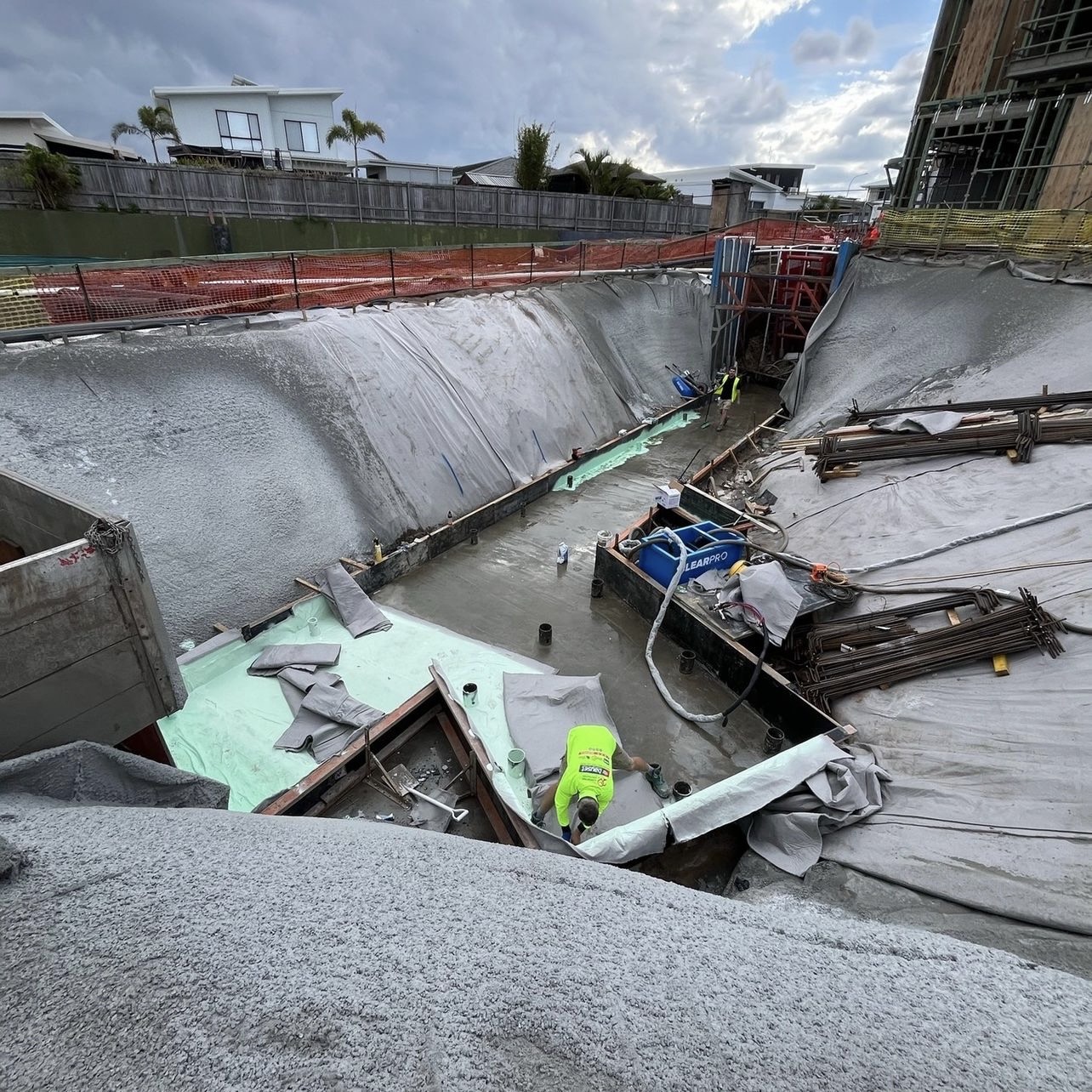ELASTON-W80 | CASE STUDY CS-008.1
Project Overview
The apartment project involved the construction of a high-rise building with a basement on a newly constructed concrete split slab. The basement was to be used as a car park and storage, making waterproofing a priority to protect against water ingress from the surrounding ground.
The split slab introduced challenges, including the 28 day concrete curing window and the construction schedule. Timely completion was crucial to align with the overall construction schedule.
For the Tanking application, we recommended a system solution of Civilox-LV100 Epoxy and Elaston-W80 pure polyurea. Elaston-W80 has a long and successful history of safely protecting & waterproofing the internal and external surfaces of Australian assets for over 20 years. With its high (80 Shore A) hardness, elastomeric and waterproofing properties, Elaston-W80 was the chosen waterproofing solution to protect and waterproof the assets' newly poured concrete slab and walls.
The Solution
After the 28 day concrete curing period and suitable surface preparation of the concrete (CSP 2 - 5), the concrete was sealed with Civilox-LV100 epoxy to ensure proper adhesion of the Elaston-W80 polyurea membrane to the concrete.
The Elaston-W80 was spray applied at 3,000 microns DFT, ensuring an even and thorough coverage across the surface of the split slab. The Elaston-W80 cured rapidly, allowing for the pouring of the second half of the slab, creating a sandwiched membrane.
Note - In areas where the concrete was wet, geotextiles were used to avoid delays associated with drying concrete.
The Result
With its ease of application and fast return to service, vice-like grip to most surfaces, its 400% elongation, and its insensitivity to a less-than-perfect substrate, the Elaston-W80 provided a seamless barrier against water ingress, protecting the basement from potential leaks and damage. The quick curing time of Elaston membrane and the use of Geofabric in areas where the concrete hadn't cured, contributed to meeting the project timeline and minimising downtime.
The Civilox-LV100 and Elaston-W80 system have demonstrated excellent performance over time, with no signs of degradation or failure, confirming the system was an outstanding solution.
The use of polyurea membranes often provide superior waterproofing compared to traditional methods, like sheet membranes, for several reasons:
- Elaston is spray-applied in liquid form, creating a continuous, seamless membrane that eliminates the risk of water infiltration through seams or joints, which is a common weakness found in sheet membranes
- Elaston has excellent flexibility and elasticity, allowing it to accommodate movement in the substrate, and thermal expansion without cracking
- Elaston adheres well to a variety of substrates, providing a strong bond that prevents delamination
- Elaston’s quick cure time allows for rapid application and return to service, compared to the often longer curing times required for sheet membranes
- Elaston offers high resistance to chemicals and abrasion, making it suitable for harsh environments and high traffic areas, where sheet membranes tend to wear down quickly
- Elaston can be applied vertically and horizontally, and can adapt to complex shapes, whereas sheet membranes may require additional detailing to fit irregular surfaces
The use of polyurea membranes for tanking basements offers substantial advantages in terms of waterproofing effectiveness, flexibility, and durability. The Apartment project exemplifies the benefits of choosing polyurea over traditional methods, providing a reliable solution that enhances the safety and longevity of the building, with an expected service life of 25+ years.
Overall, this case study highlights the importance of selecting appropriate waterproofing technologies to address specific construction challenges and achieve long-term success in building projects.
Expected Service Life
25+ Years
Substrate Material
Newly constructed concrete
Location of Asset
Glenelg, South Australia






